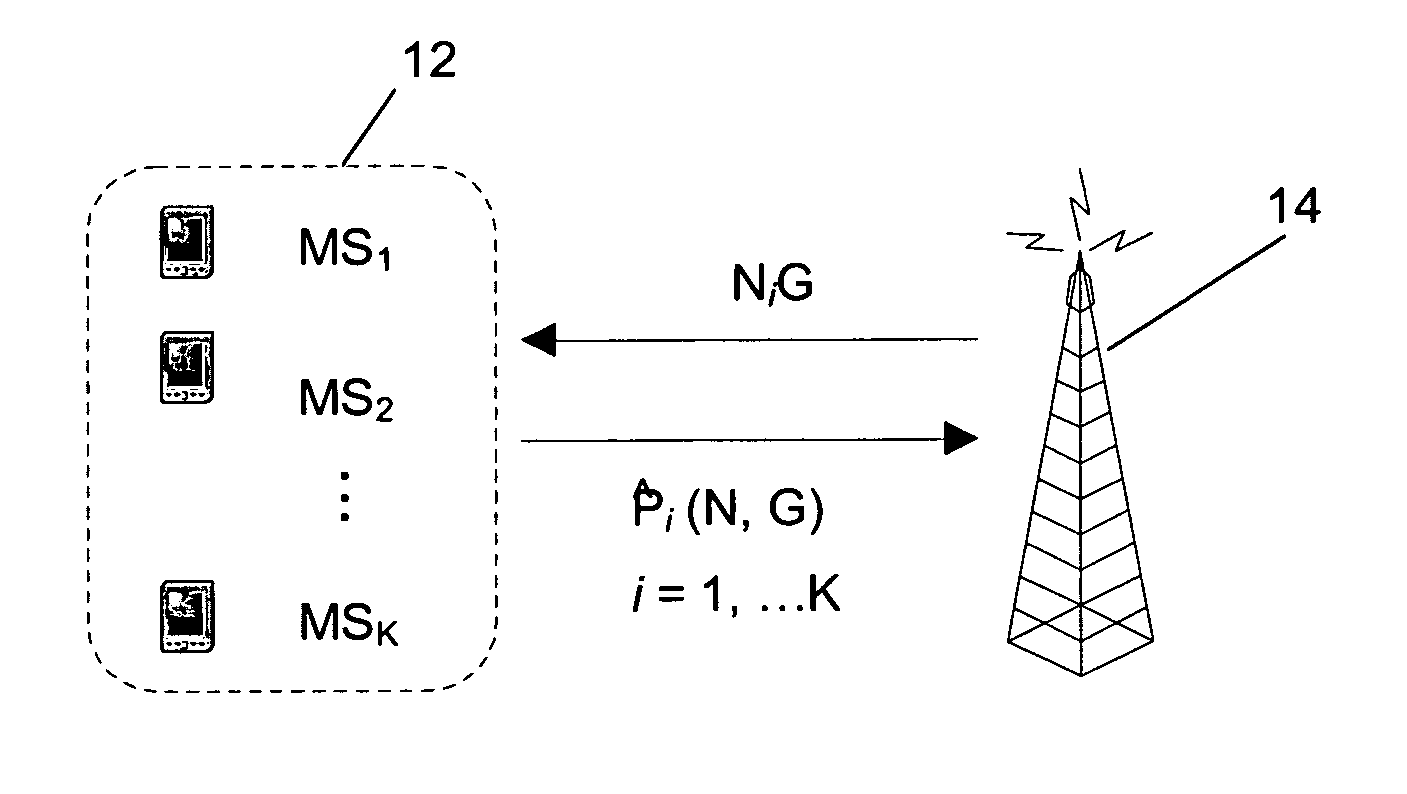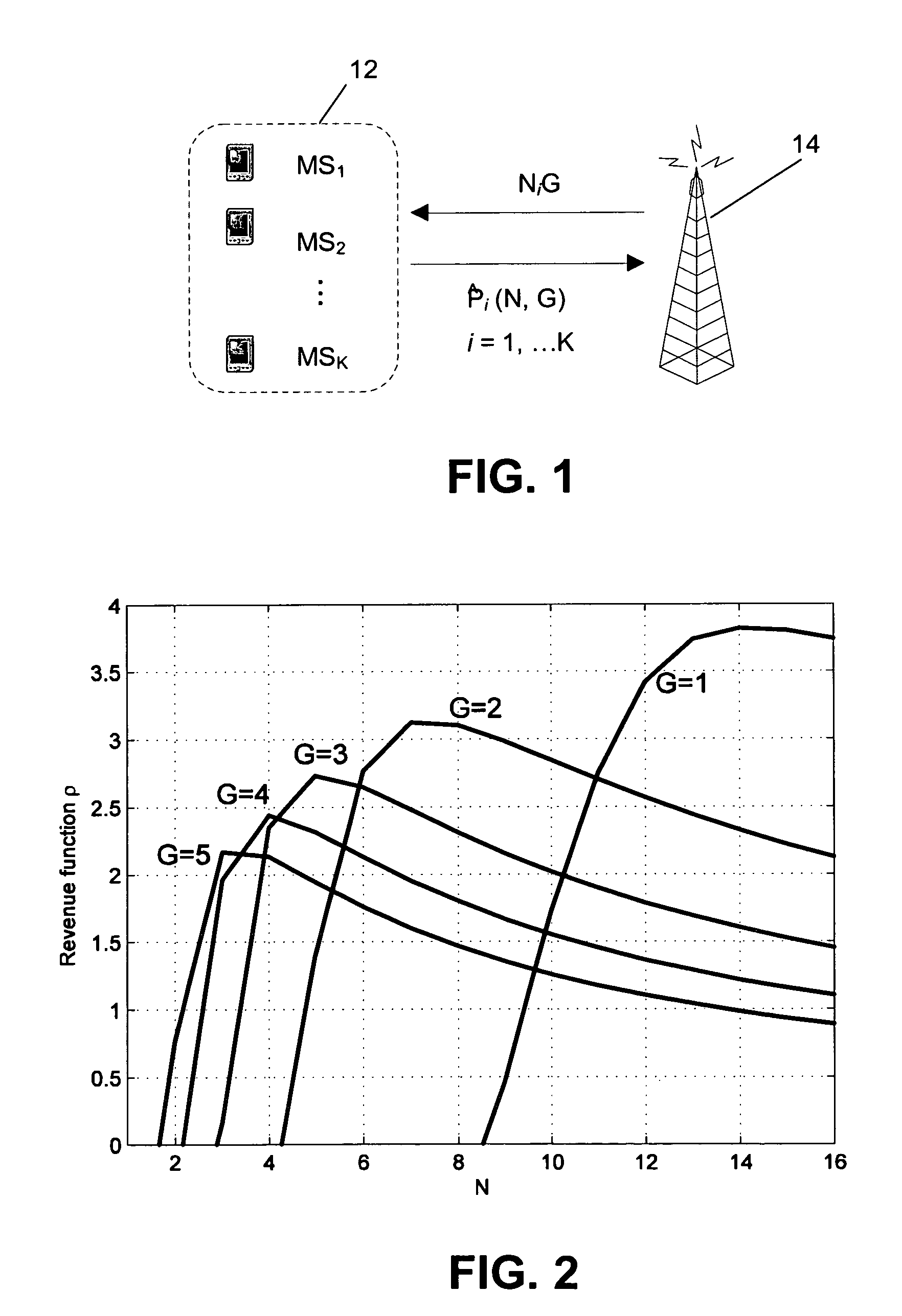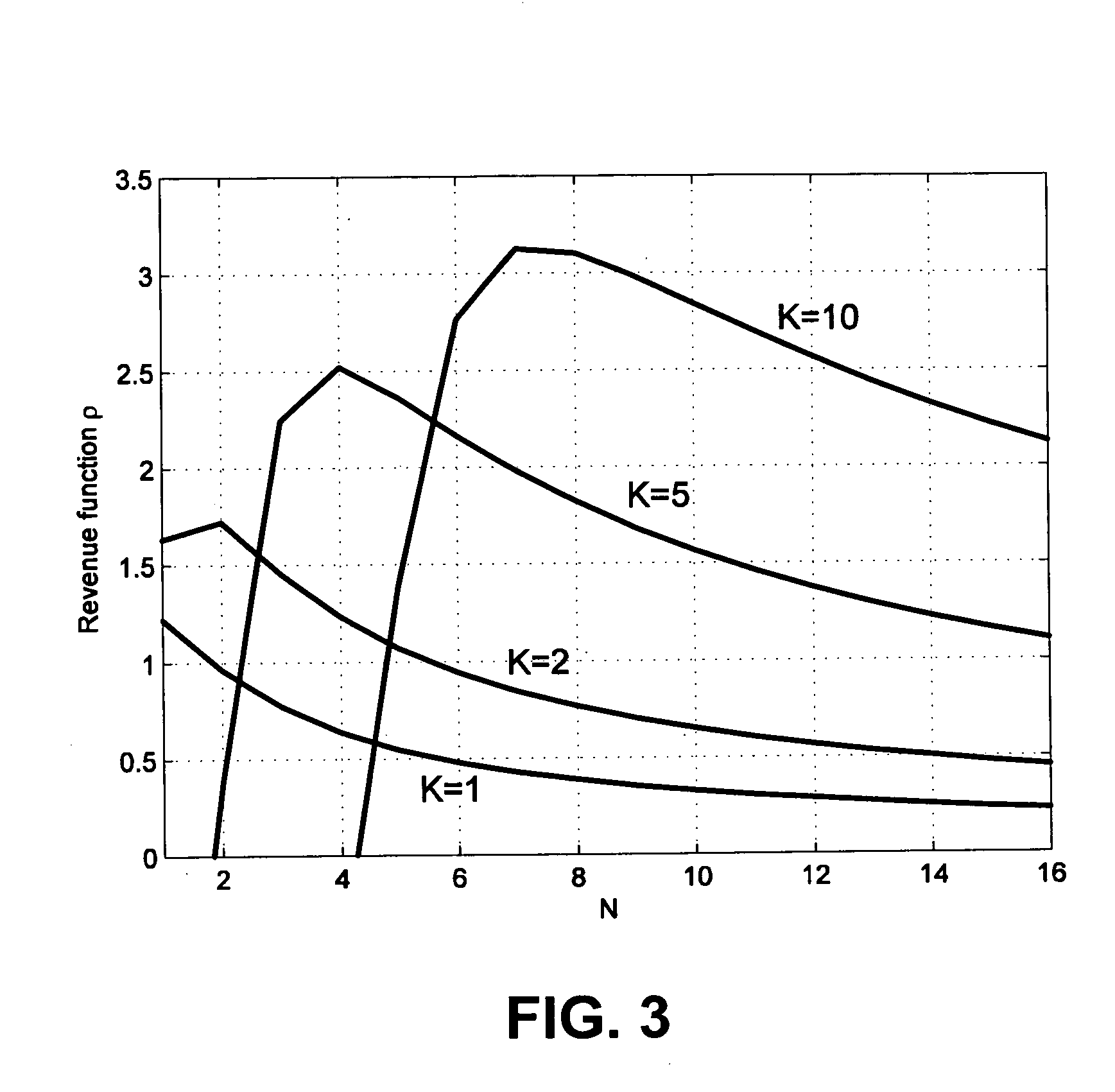Method and system for decentralized power control of a multi-antenna access point using game theory
a multi-antenna access point and power control technology, applied in the field of communication systems, can solve the problems of poor network performance, direct control cannot be guaranteed in some wireless networks, prior power control systems and methods in wireless communication networks have not included decentralized power control and game theory, etc., to maximize the power efficiency of the mss, maximize user preferences, and save investment
- Summary
- Abstract
- Description
- Claims
- Application Information
AI Technical Summary
Benefits of technology
Problems solved by technology
Method used
Image
Examples
Embodiment Construction
Exemplary embodiments are described below with reference to the accompanying drawings. It should be understood that the following description is intended to describe exemplary embodiments of the invention, and not to limit the invention.
A set of K single-antenna MSs transmit in the same time-frequency resource towards an AP with transmission powers Pi, i=1, . . . , K, using asynchronous code-division access with processing gain G≧1. The set of all transmission powers is P=(P1, P2 . . . , PK)Tε where is the set of allowed MSs' powers, and the maximum transmission power per user is denoted as Pmax. The AP is equipped with N (receiving) antennas, and the independent identically distributed (iid) complex Gaussian channel gains between ith MS and jth AP antenna are denoted as hij. Using a vector notation, the set of channels between user i and N antennas is hi=(hil, . . . , hiN)T, while the set of all channel gains is given by N×K matrix H=(h1, h2, . . . , hK). Matched filtering (MF) is...
PUM
 Login to View More
Login to View More Abstract
Description
Claims
Application Information
 Login to View More
Login to View More - R&D
- Intellectual Property
- Life Sciences
- Materials
- Tech Scout
- Unparalleled Data Quality
- Higher Quality Content
- 60% Fewer Hallucinations
Browse by: Latest US Patents, China's latest patents, Technical Efficacy Thesaurus, Application Domain, Technology Topic, Popular Technical Reports.
© 2025 PatSnap. All rights reserved.Legal|Privacy policy|Modern Slavery Act Transparency Statement|Sitemap|About US| Contact US: help@patsnap.com



